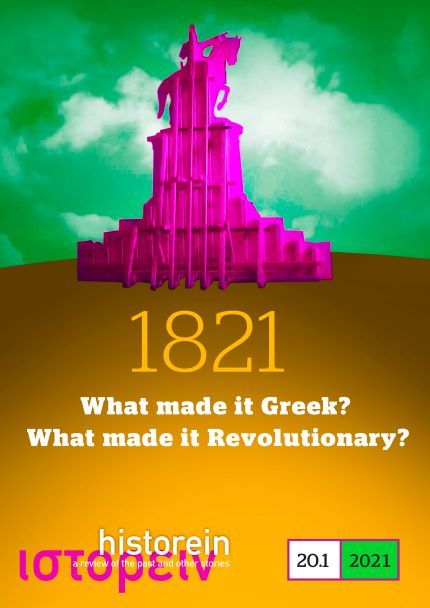Empires, Nations and the Question of Territorial Sovereignty in the Greek Archipelago during the Greek Revolution The case of Syros

Abstract
Based mainly on the correspondence between the local religious and secular authorities, the Sacred Congregation for the Propagation of the Faith (Propaganda Fide) in Rome, representatives of the French and Austrian governments and the Greek insurgents, this article demonstrates how the story of the Catholic community of Syros describes the making of a new frontier but also the shaping of a new territorial conception of sovereignty where multiple agents and jurisdictions co-existed next to each other for centuries. The so-called “Pope’s Island” was the only one with a solid Roman Catholic majority among its inhabitants. After the outbreak of the Greek revolt, Syros declared its neutrality and became a safe haven for Orthodox refugees fleeing from Ottoman reprisals, especially after the Chios massacres in April 1822. By 1825, around 30,000 (mainly Orthodox) refugees had taken over the port, which in the meantime became a Christian “Eldorado” of legal trade and illegal traffic of all sorts, including piracy booties and slave labour.
Article Details
- How to Cite
-
Kousouris, D. (2023). Empires, Nations and the Question of Territorial Sovereignty in the Greek Archipelago during the Greek Revolution : The case of Syros. Historein, 21(1). https://doi.org/10.12681/historein.26956
- Section
- ARTICLES

This work is licensed under a Creative Commons Attribution-NonCommercial-ShareAlike 4.0 International License.
The copyright for articles in this journal is retained by the author(s), with first publication rights granted to the journal. By virtue of their appearance in this open access journal, articles are free to use (with the exception of the non-granted right to make derivative works) with proper attribution for non-commercial uses (licence Creative Commons 4.0). EKT/NHRF retains the worldwide right to reproduce, display, distribute, and use articles published in Historein in all formats and media, either separately or as part of collective works for the full term of copyright. This includes but is not limited to the right to publish articles in an issue of the Journal, copy and distribute individual reprints of the articles, authorize reproduction of articles in their entirety in another EKT/NHRF publication, and authorize reproduction and distribution of articles or abstracts thereof by means of computerized retrieval systems.


